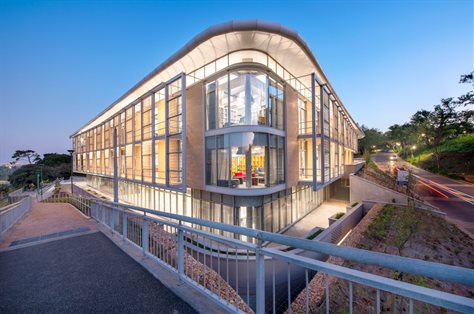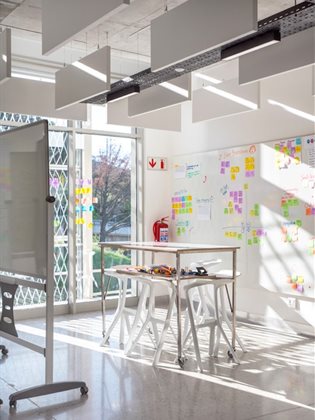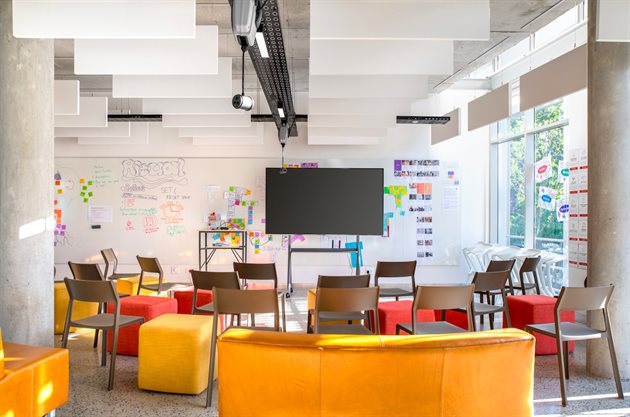
It’s been just over a year since the HPI d-school building on UCT’s middle campus became home to the Hasso Plattner d-school Afrika. The new building has been purposefully designed to leverage the power of space (in both its architecture and interior design) in fostering collaboration, creativity, and innovation.
The building features radically flexible learning spaces where we can experiment and collaborate with the students to both understand and allow for the emergence of what future learning spaces could look like, and become.
In this context, space is the classroom, location, and physical geography in which teaching and learning happens. As a result and according to the Stanford d.school, space 'can shape behaviour. When it comes to inspiring creativity, a student’s relationship to their physical environment is paramount'.




If the goal with a space is to embed a behaviour or enhance an activity, we need to see spaces as laboratories that are purposely designed to enable this. At the d-school Afrika, for example, we view the spaces as laboratories that have been carefully designed to drive the creative and collaborative behaviour that we want students to experience and ultimately, practise.
Consider traditional laboratories in universities, specifically at science faculties: all the equipment, furniture and space has been purposefully designed to drive knowledge development and practice in that field.
The same is relevant for design-thinking spaces like the d-school however, the focus is on driving innovation and co-creation.
At the d-school building this was taken a step further. For example, the various studios in the building are open plan and serve as a blank canvas that invites users to create their desired experimental setup for a given challenge they’re aiming to solve. The building also features interchangeable rooms that can either be used as a large workspace or split into two separate working spaces.
In addition, all the furniture and equipment (e.g., whiteboards, TVs, etc.) in the building are mobile – on actual wheels – and can be arranged fit for the user’s purposes. This affords teams the freedom to create and recreate the space for each collaboration session.
This freedom of mobility in itself also contributes to deeper collaboration, creativity, and innovation in the teams using the space.




Jonathan Ray, partner at KMH and lead architect for the d-school building explains that architects, as an example, understand how the various characteristics of any given space – from its size, proportion, materiality, lighting and acoustics, to how open or closed it is – help determine a space’s overall character.
“But this is only half the story,” he says. “Spaces come to life and have meaning through their occupants and when they are in use. So, to a certain extent, every building is different and the designer needs to understand both the collective culture of the building's occupants and what they want to achieve in order to make successful spaces that foster a particular type of response.”
According to Jonathan, KMH found design-thinking principles and methods an extremely useful way to construct a deep and nuanced shared vision for a project such as the d-school building.
“We’ve successfully used these tools on another education-sector project,” he says “and it yielded a similar result to what we experienced with the d-school, in particular the sense of ownership and common purpose for everyone involved in the project, including the client.”




Using teams in an organisation as a further example of this practice, there is no one-size-fits all approach because every organisation is different. There will certainly be an element of exploration and experimentation to find out what works best for your teams.
However, there is an underlying principle that space alone will not drive innovation and co-creation.
Design-led Thinking should rather be viewed as an ecosystem consisting of a unique space (or laboratory), a structured process or activity within that space, and the diversity of people who are engaged within that space.